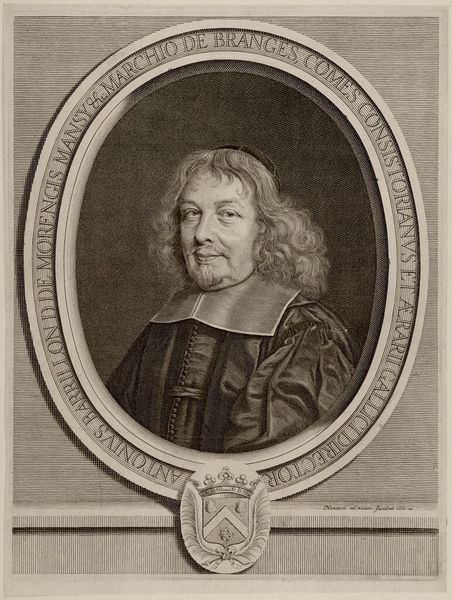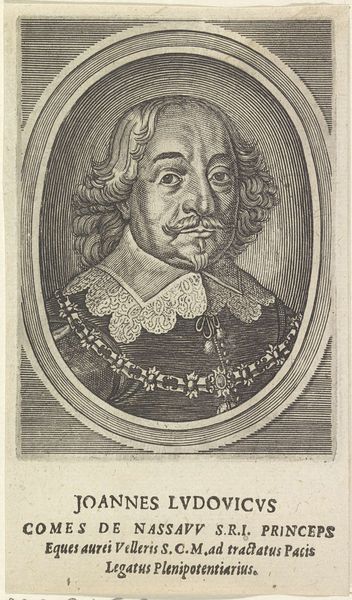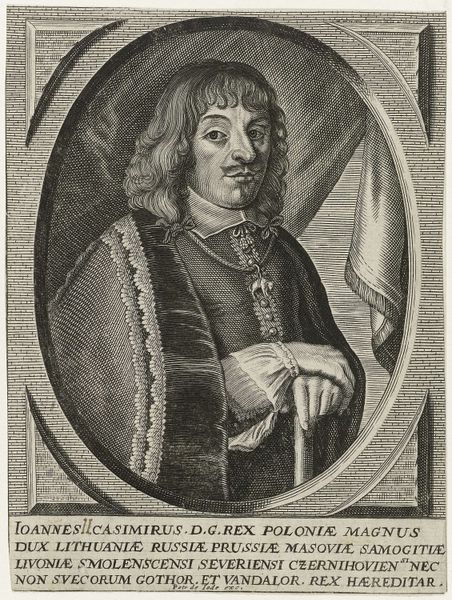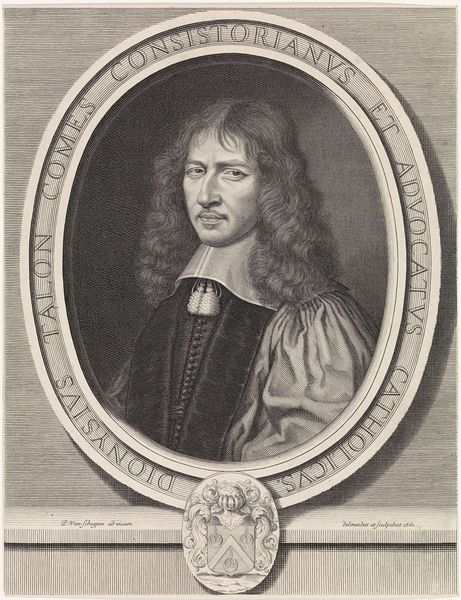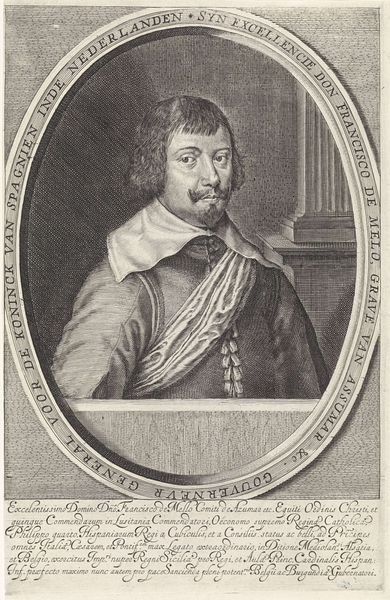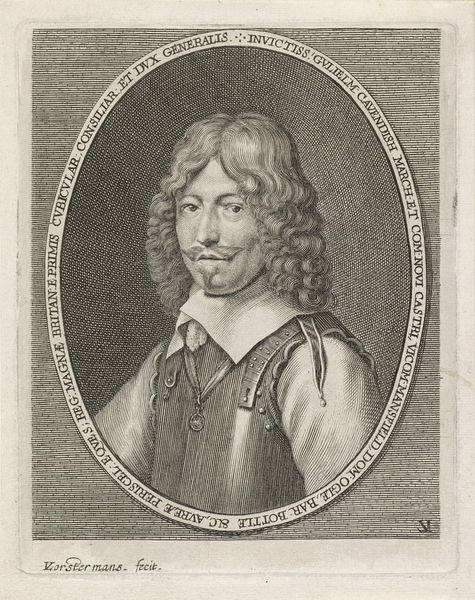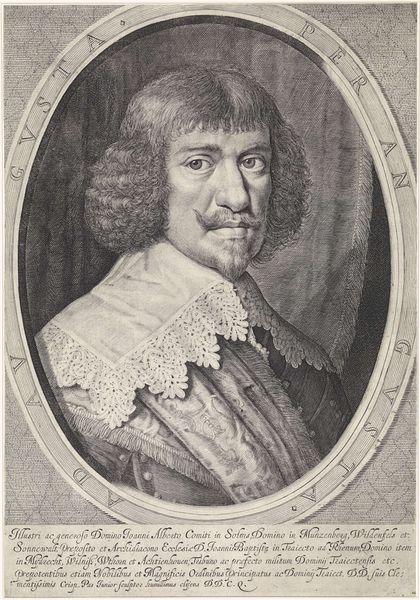
intaglio, engraving
#
portrait
#
baroque
#
intaglio
#
engraving
Dimensions: height 216 mm, width 143 mm
Copyright: Rijks Museum: Open Domain
This portrait of Johan Maurits, Count of Nassau-Siegen, rendered by an anonymous hand, presents us with a figure framed within an oval inscribed with the words "Et Orbis Quia." These words speak to the Count’s worldly reach and ambitions. Consider the recurring motif of the oval frame itself. In antiquity, the oval, often appearing as an egg or mandorla, symbolized potential, birth, and renewal. The encapsulation of Johan Maurits within this shape suggests not only his individual potential but also hints at the broader aspirations of his era. We see the oval repeated throughout history. Interestingly, it recurs in Renaissance art, framing sacred figures. There, it suggests a divine or protected space, a subtle nod to the subject's elevated status or perceived importance. This visual echo invites us to reflect on how societies elevate their leaders, imbuing them with an aura of almost mythical significance. The Count becomes not just a man, but a figure representative of an epoch.
Comments
No comments
Be the first to comment and join the conversation on the ultimate creative platform.
